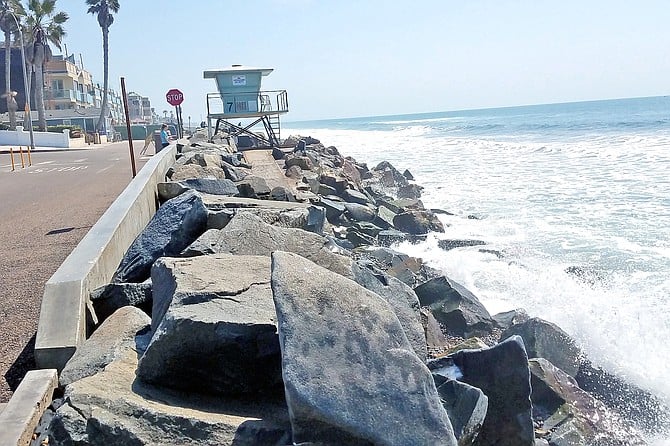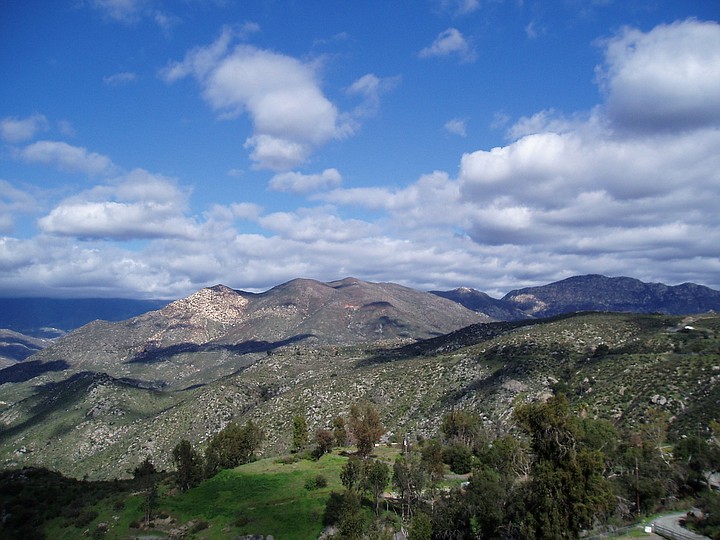 Facebook
Facebook
 X
X
 Instagram
Instagram
 TikTok
TikTok
 Youtube
Youtube

As the Beach Season Winds Down, San Diego County’s coastline is padded by what are likely the deepest and widest accumulations of sand we’ll see this year. Many stretches of the coastline are vulnerable to powerful waves associated with winter storms. This wave action can pull sand off the beaches and deposit it offshore, leaving behind (especially in North County) nothing but cobble beds. During the spring and summer, gentle wave action usually returns much of the sand, usually in time for the arrival of the summer tourists.

Late September signals the beginning of Santa Ana Winds, which may continue intermittently through the winter. Early Santa Anas are often responsible for coastal San Diego’s hottest and driest days of the year. Records show that 62 percent of the days at Lindbergh Field with 90-degree readings or higher have occurred during the months of September and October. The desertlike days are a consequence of dry air from a high-pressure area centered over Nevada or Utah moving across Southern California’s coastal mountains toward a low pressure area offshore in the Pacific Ocean. West of the mountains the air sinks as it rushes toward the coast, heating (by compression) about 5 1/2 degrees Fahrenheit for every 1000 feet of descent. During a full-blown Santa Ana, gale-force winds rake the foothills downwind of the mountain passes, and San Diego’s coastal communities often experience temperatures that are among the nation’s highest.

Escaping the Heat of this season’s first couple of Santa Anas will not be easy — if you can’t be inside air-conditioned buildings at any rate. Along the coastline, where temperatures may reach the 90s, taking a dip in the surf solves the problem. Inland, the furnace-like heat is moderated only by increases in altitude. Head for the high places of the county — the mile-plus heights of the Palomar and Laguna Mountains, for example. You could climb a couple of the county’s loftiest peaks: Cuyamaca Peak (6512’) in Cuyamaca Rancho State Park or Boucher Hill (5438’) in Palomar Mountain State Park. On peaks such as these during a Santa Ana-wind episode, the thermometer registers about 25-30 degrees lower than in the lowlands. Since the early phase of a Santa Ana sweeps away atmospheric water vapor and air pollution, hundred mile vistas in every direction may be yours to enjoy.
The above comes from the Outdoors listings in the Reader compiled by Jerry Schad, author of Afoot & Afield in San Diego County. Schad died in 2011.


As the Beach Season Winds Down, San Diego County’s coastline is padded by what are likely the deepest and widest accumulations of sand we’ll see this year. Many stretches of the coastline are vulnerable to powerful waves associated with winter storms. This wave action can pull sand off the beaches and deposit it offshore, leaving behind (especially in North County) nothing but cobble beds. During the spring and summer, gentle wave action usually returns much of the sand, usually in time for the arrival of the summer tourists.

Late September signals the beginning of Santa Ana Winds, which may continue intermittently through the winter. Early Santa Anas are often responsible for coastal San Diego’s hottest and driest days of the year. Records show that 62 percent of the days at Lindbergh Field with 90-degree readings or higher have occurred during the months of September and October. The desertlike days are a consequence of dry air from a high-pressure area centered over Nevada or Utah moving across Southern California’s coastal mountains toward a low pressure area offshore in the Pacific Ocean. West of the mountains the air sinks as it rushes toward the coast, heating (by compression) about 5 1/2 degrees Fahrenheit for every 1000 feet of descent. During a full-blown Santa Ana, gale-force winds rake the foothills downwind of the mountain passes, and San Diego’s coastal communities often experience temperatures that are among the nation’s highest.

Escaping the Heat of this season’s first couple of Santa Anas will not be easy — if you can’t be inside air-conditioned buildings at any rate. Along the coastline, where temperatures may reach the 90s, taking a dip in the surf solves the problem. Inland, the furnace-like heat is moderated only by increases in altitude. Head for the high places of the county — the mile-plus heights of the Palomar and Laguna Mountains, for example. You could climb a couple of the county’s loftiest peaks: Cuyamaca Peak (6512’) in Cuyamaca Rancho State Park or Boucher Hill (5438’) in Palomar Mountain State Park. On peaks such as these during a Santa Ana-wind episode, the thermometer registers about 25-30 degrees lower than in the lowlands. Since the early phase of a Santa Ana sweeps away atmospheric water vapor and air pollution, hundred mile vistas in every direction may be yours to enjoy.
The above comes from the Outdoors listings in the Reader compiled by Jerry Schad, author of Afoot & Afield in San Diego County. Schad died in 2011.
Comments